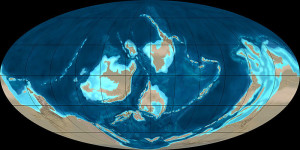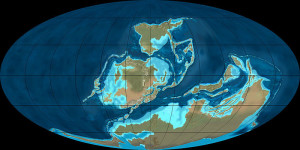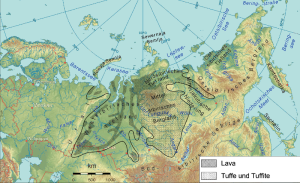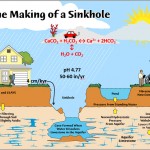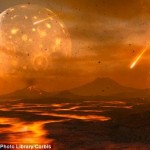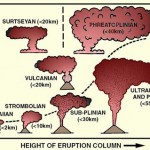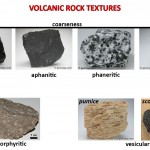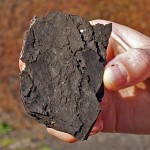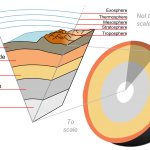This article is going to very briefly explain what constitutes a "Big Extinction" and sum up in an easily understood manner the causes and effects of the five (or six!) events. Click on the extinction title to go to Wikipedia page where you can find more information, including sources. Note that the simplicity of this article means it excludes important details, controversies, and caveats. Google is your friend.
What is a Big Extinction? This is the criteria we'll use:
- 40% of genera go extinct
- Happens in a short time span (<2 my)
- Affects everyone (e.g. not like the Pleistocene megafauna extinction, where only very large animals were affected)
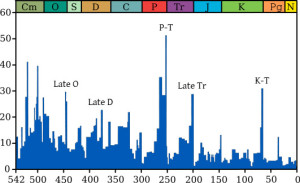
Extinction intensity. Source and explanation here.
1) Late Ordovician
- Causes:
- Short-lived cooling (glaciation over Laurentia and Baltica as Gondwana breaks apart) followed by warming over ~100,000 years
- Evidence & effects:
- 1st pulse:
- Seawater enriched in 18O (lighter 16O evaporates preferentially, but due to water cycle, no change in 16O:18O ratio; when glaciation occurs, 16O gets stuck in the ice and the ocean is enriched in 18O)
- Tropical reef builders gone
- Epeiric (continental) sea species gone
- Cool water species appear in low latitudes
- 2nd pulse:
- Lower 18O in seawater
- Cool water species disappear from low latitudes
- 1st pulse:
2) Late Devonian (Frasnian-Famennian)
- Causes:
- Cooling as planet adjusts to extensive plant-life affecting the carbon cycle
- Evidence & effects:
- Seawater enriched in 18O
- Tropical marine species disappear
- Limestone production drops very dramatically; black mud appears
- Deep species move to shallow water
- Decrease in floral species
3) P-T
- Causes:
- Cooling followed by rapid warming and ocean stagnation as Pangaea forms with large interior desert
- Siberian Traps (large flood basalt deposits)
- New theory: evolution of methane-producing bacteria
- Evidence & effects: 85% genera extinct
4) Late Triassic
- Causes:
- Probably warming; poorly understood
- Extinctions:
- 50% marine genera, most therapsids extinct
- Evidence:
- Leaves have less stomates (stomates are how plants uptake CO2; less stomates are needed in low CO2 conditions, which are also associated with high temperatures)
- Large basalt deposits possibly related
5) K-T
- Causes:
- Asteroid
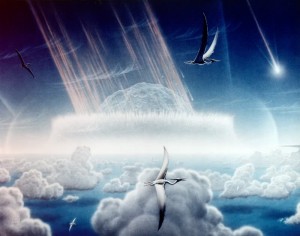
- Deccan flood basalts
- Significant drop in sea level
- Asteroid
- Effects:
- Extinctions:
- Dinosaurs (non-avian), large marine reptiles, ammonoids extinct
- 90% plankton extinct
- Decrease in rudist bivalves (then a dominant reef-builder)
- Decrease in land plants
- Climate:
- Massive temperature drop due to dust thrown into atmosphere
- Extinctions:
- Evidence:
- Tritium
- Tektites and spherules
- Shocked quartz
- Impact diamonds
- Chicxulub crater
- Tsunami deposits
6) Now?
- Human-driven habitat loss, pollution, climate change, and so on could be causing the next big extinction as we speak
The material came from my lecture notes for EOS 204L, Duke University, Spring 2014, and is not necessarily accurate or up-to-date.

